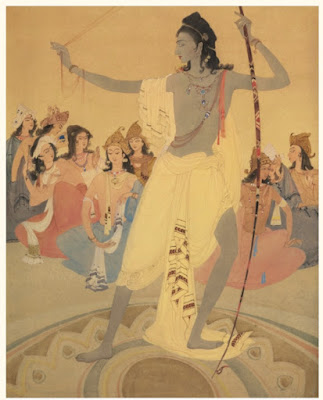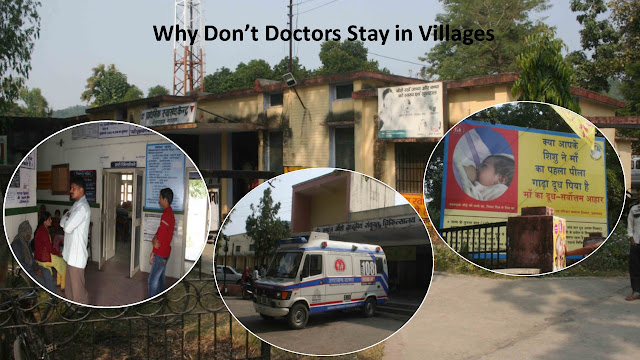Anxious Men and their Muscular Masculinity
The period of Navaratri has just ended with Ramnavami. In the hills of Uttarakhand where I stay now, the period is marked by a period of fasting, praying and singing. Our valley resounded with prayers from all directions alternately reverberating and damped by the mountainsides and forests. On Ram Navami the Bhagwat Katha and Kirtans or prayers ended with the bhandara or the communal feast. Women wearing their best clothes with their children straggling behind them or skipping ahead, went up and down the road above our house, going to or returning from the Bhagwat further up. In the evening the sound of hudka, a local handheld drum, marked the jagar or prayers to the local god by the dancing shaman that went late into the night. Our participation in the ritual festivities was limited to having the puri, chole and halwa that our neighbour brought us. It was a dignified, peaceful and happy nine-day celebration of the new year here in our village.
Elsewhere the news around the celebration of Ramnavami was very distressing. I read in the news next morning that there was widespread violence in Howrah in West Bengal, in Vadodra in Gujarat and in Shambhajinagar in Maharashtra . In Jahangirpuri in Delhi, over 1000 people turned up for a Ramnavami procession despite police prohibition and barricades . Many political observers have noted that over the years the celebration of Lord Rama’s birthday has become an ocassion for communal violence. According to a Wikipedia entry ‘(T)his festival often involves processions of Hindu worshipers through cities, including Muslim-majority regions. These displays, often considered provocative, have repeatedly led to violence between Hindu and Muslim communities.’ As Lord Rama has morphed into a political symbol, his birthday is increasingly being celebrated in the most martial manner with flag marches and sword play as many pictures from newspapers around the country will testify.
It is easy to pin the
blame for this sign of religious aggression on political leaders and on tit-for-tat
politics that has become strong justification for public and political violence
in our country. But that would be
a very easy way to ignore the changes that are taking place in our society around
what it means to be a man. Films, especially in India, are supposed to portray
the aspirations of the times. These aspirations may be unrealistic or
exaggerated, but from the times of Raj Kapur and Devanand through the Amitabh Bachhan
years to the current Khan years, Bollywood has represented our collective
dreams. The picture below shows some of the biggest stars of yesteryears along
with the images of heros from two of the biggest grossing films in the last one
year. The difference is stark!
I
am no expert on films, but I am told that our on-screen heroes represent in some
ways, the way ‘we’ men would like to see ourselves. The changes in our heroes would
then mean that men today no longer see themselves as kind or hopeful, but identify
more with being angry and vengeful. It is important to consider the changes
that have taken place in the lives of these millions of men who turn to the cinema
for respite from the humdrum of their daily lives. It is not that all these men
are violent in their own lives, but they are happy to justify it. While they
are seeing films for entertainment, at the same time probably, this anger and
violence satisfies some amorphous but deep seated anxiety.
Changing
realities of men
India
has changed over the last fifty years, more so in the last 30 years. Overall poverty,
poor health, lack of education, the abysmal situation of dalits (or Scheduled
Castes and Tribes according to official classification), or the subordinate position
of women are problems that we have left behind as a country. Now, our
aspirations are global leadership and our technological prowesses are world
class. If things are looking up for the country why then are these millions of
men still anxious?
The
lives of these millions of men have also changed. The dramatic economic changes
of the last thirty years have been fueled by a technically skilled workforce. Lakhs
of young men, have become part of this work force. They have moved from the rural
hinterland to Bangalore, Pune, Hyderabad, Gurgaon, Noida and some even to
Silicon valley. Many from small towns in India are among the leadership of
global companies. Millions have moved from economic precarity to the middle
class. Witness, India is now among the biggest markets in the world for cars
and consumers durables. The Indian domestic market is so large and robust that
it guards our economy from global shocks. Indian men are not only part of, but
also drivers of this success story.
What
has also happened in these thirty years is that the Indian population has expanded
dramatically. It is tempting to think that it is because of continued fertility.
Unfortunately it is not. Our fertility has declined, but the growth in the
number of youth has continued to rise because of better health care, and also
due to high birth rates earlier. (We have to remember todays youth were children
yesterday.) So, while lakhs have benefitted, crores have been left behind.
Availability of jobs hasn’t kept pace with this rise in the number of youth. We
are faced with the highest unemployment rates in generations. Agricultural
fragmentation and a rising market based economy has meant that rural agrarian
lives are no longer sustainable. The youth are caught in a trap with no
resources, no opportunities and no skills sets. Millions are moving from their
homes, seeking places were informal employment opportunities exist. We saw these
people walking home during the pandemic like cockroaches scurrying out of their
hiding places when the kitchen corners are sprayed with insecticides. Cities
are getting over-crowded, urban infrastructure is at a breaking point, slums
are proliferating and the urban poor are being cursed and their shanties are being
bulldozed.
But
this is happening both to young women and to young men. Why then are men the
only ones who anxious and insecure? The reason behind this is probably due to
the different ways in which boys and girls are brought up and the different ways
in which some of the other changes have affected boys and girls. Boys grow up
with a sense of entitlement, girls don’t. Boys take opporunities and resources
for granted because they are provided them as soon as they need these or ask
for them. Girls don’t. They are trained to live with less, to make do with limited
opportunities and resources. Girls are trained to be carers and nuturers
despite their personal difficulties.
As
they become adults, men are expected to provide and protect their families in
exchange for all the amenities at home. But the situation both outside and
inside the home has become very different in these intervening years. They are
unable to provide and even to protect as the Covid 19 pandemic sharply brought
to focus. Women are no longer waiting at home to be docile providers. Millions
of women are now educated and move freely outside the home. Many have taken up the
role of the cash earner/breadwinner in addition to being the carer-nuturer. The
unquestioning authority that men enjoyed at home no longer exists. Men simply
can’t cope with this double sided disruption to how they were socially conditioned
to ‘be’ – the successful provider and protector and the master at home. This male
anxiety can be be related to what experts call ‘ontological insecurity’, a
situation when you feel you are no longer who you believe you are.
Regaining
a sense of ‘being’ men
Contest,
aggression, violence and victory are age old tools of validation for men. The
successful warrior, the aggressive deal-maker, the victorious team, the disruptive
enterpreneur are all heroes in their own worlds. The men that we have
been discussing have little to feel like heroes even in their own eyes. They
seek a new source of validation, an easily identified enemy or other that we
can conquer, show our agression over.
It
is not surprising therefore, that our political leaders find it easy to sell easy
enemies to this electorate. While the claim our greatness at evey opportunity
they lack confidence and sell stories about enemies not only abroad but also
within it. Ripping muscles and angry faces become the mark of our heroes. Flags, swords, guns and provocative slogans become
symbols of religious piety. The use of force and violence becomes morally
justified. It is also not surprising that misogyny and violence against women is
also rising today as women too become an easily identified enemy.
But
this is not the only way the story is, needs to be, or has been in the past. My
Uttarakhand Ramnavami experience shows that a completely different reality is
also possible in present times. Similarly there are many syncretic practices
across our country which continue to be alive despite this onslaught of hate,
anger and violence. My faith that a different reality was possible was further
strengthened when I read this story about Manjoor Khan a 78 year old Muslim man
from Jharkhand
who led the Ramnavami procession in his town for the 45th year. When
I received this painting of Ram
at Seeta’s swayamvar by Abdur Rahaman Chugtai, one of Pakistan’s most
celebrated artists, as a Ramnavami greeting, I knew I was not alone in this faith.
I however wonder why the many thousands of men, who do not face many difficulties,
also buy into the present logic. What is their ontological insecurity I wonder?





Comments
Post a Comment